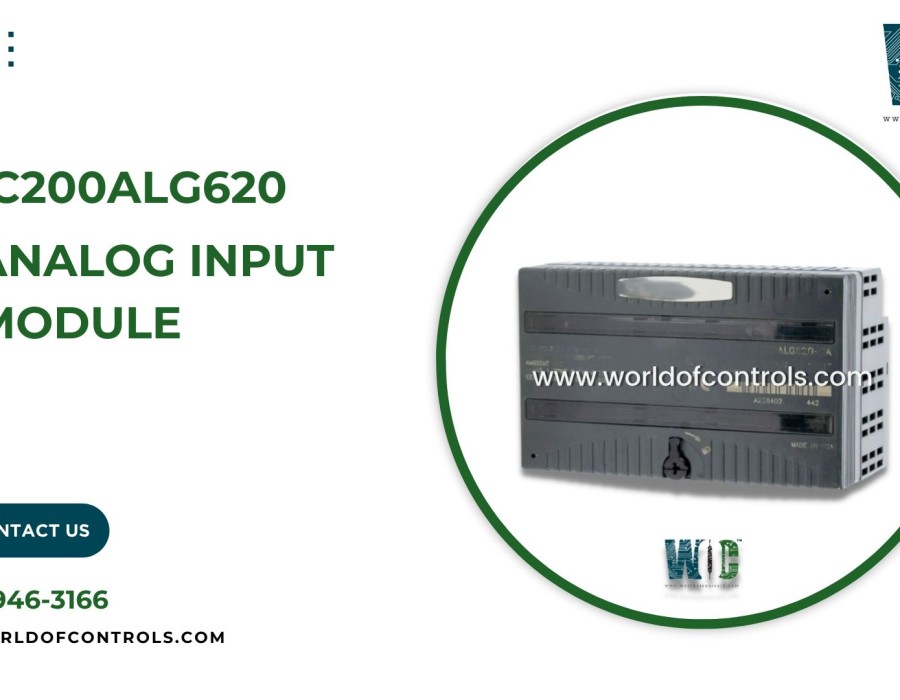Introduction
In the world of industrial automation, analog input modules serve as a bridge between physical processes and digital control systems. General Electric (GE) offers a range of robust analog input modules that are widely used across industries for reliable data acquisition. These modules are particularly valuable in the turbine industry, where precise monitoring of temperature, pressure, and vibration is essential for efficiency and safety.
What Are Analog Input Modules?
Analog input modules are devices used in Programmable Logic Controllers (PLCs) or Distributed Control Systems (DCS) to receive analog signals—such as 4–20 mA current loops or 0–10 V voltage levels—from field instruments like temperature sensors, pressure transmitters, and flow meters. The module converts these signals into digital values that automation systems can process, analyze, and act upon.
GE Analog Input Modules: Key Features
GE’s analog input modules, part of the company's well-regarded industrial control platform, offer:
- Multiple differential input channels (typically 8)
- Selectable current or voltage input modes per channel
- High signal resolution and accuracy
- Easy configuration through automation software
- DIN-rail mounting and compact form factor
- Hot-swap capability for fast maintenance
These features make them a reliable choice for industries requiring continuous and precise monitoring, including power generation, oil and gas, and manufacturing.
Applications in the Turbine Industry
In turbine systems—whether gas or steam—monitoring key process variables is critical. GE analog input modules are commonly used to collect data from:
- Thermocouples and RTDs measuring turbine inlet and exhaust temperatures
- Pressure transmitters in lubrication, fuel, and air systems
- Vibration sensors on rotating shafts and bearings
These inputs allow control systems to:
- Adjust operational parameters in real time
- Detect anomalies before they escalate into failures
- Maintain safe and stable turbine operation
- Optimize fuel efficiency and performance
Steps to Use GE Analog Input Modules in Automation Systems
1. System Planning
Begin by identifying the required input types (voltage or current) for each sensor in your system. Each input channel on the module can typically be configured independently, allowing for flexibility in sensor integration.
2. Hardware Installation
Mount the module onto a DIN rail in your control panel. Ensure it is properly grounded to avoid electrical noise interference. Use shielded cables when connecting sensors to the input terminals, especially in turbine environments where electromagnetic interference (EMI) is common.
3. Software Configuration
Using GE’s control configuration software (such as Proficy Machine Edition), set the mode for each input channel. Define scaling parameters so that raw analog signals (e.g., 4–20 mA) correspond to meaningful engineering values like °C or PSI.
4. Calibration and Validation
After wiring and configuration, use a known reference signal or calibration tool to verify that each input channel is accurately capturing sensor data. Adjust scaling or filtering parameters as needed.
5. Ongoing Monitoring and Maintenance
These modules support diagnostic features, including signal loss detection and out-of-range alerts. Regularly monitor these diagnostics to ensure sensor integrity. In case of faults, the hot-swappable design allows for quick replacement without shutting down the system.
Best Practices for Effective Use
- Use proper cable shielding to prevent signal distortion
- Label input channels clearly for easy identification during maintenance
- Periodically recalibrate sensors and input channels
- Document configurations for future troubleshooting or upgrades
Conclusion
GE analog input modules are vital tools for bringing analog process data into industrial control systems. Their precision, flexibility, and ease of integration make them especially suitable for complex environments like turbine control systems, where performance, reliability, and safety are non-negotiable. By following best practices in installation, configuration, and maintenance, industrial professionals can ensure their automation systems operate smoothly and efficiently.
Our Products





Comments